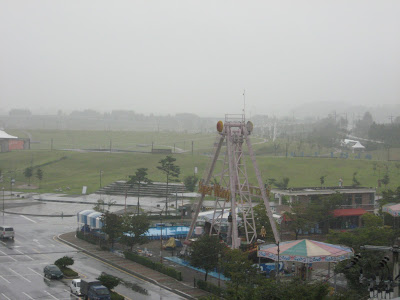Ahh, Pusan. I don't know if it was the unexpectedly nice hotel room with a view of the sea, or the resort-like area of Haeundae Beach where we were staying that felt like Hawaii, or that the rainy season was ending, or just that we finally stopped packing too many things into the day...but ahhh. Pusan was heavenly.
The first night we strolled down the boardwalk toward the Westin, which is perched on a cliff, and around Dongbaek Park over wooden walkways, suspension bridges and stairs until the Gwangan Bridge and Pusan skyline came into view. Folks were jogging, families playing, it was just a completely different vibe from the rest of our trip.
Heading the other direction on the boardwalk we made our way to "Raw Fish Village" (which I'm sure sounds more romantic in Korean) for some extremely fresh sashimi.
and some other things that we didn't exactly recognize.
The next morning we went to the Jagalchi Fish Market to see where all the seafood comes from.
I have no idea how these buckets of hooks work...
but they certainly get the job done.
We've got pictures a plenty of all the fish being sold at the nearby fish market. I will include those in the next installment about markets and street food.





































